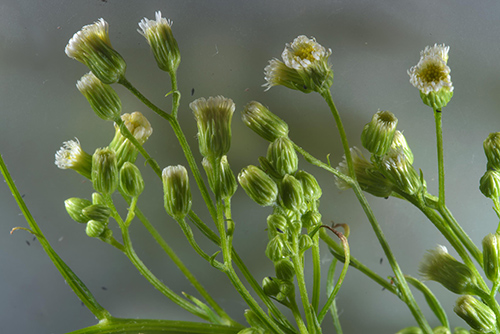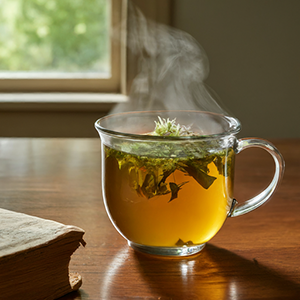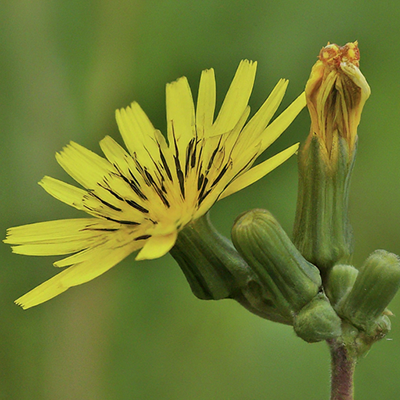Since ancient times, the North American Indians have known about horseweed’s benefits for treating uterine bleeding and excessive menstruation. In Europe, its essence was used during the First World War as a hemostatic substance to stop hemorrhaging. A highly appreciated plant in the United States and Canada, it is becoming more well-known and used throughout Europe.

Horseweed Scientific Facts
- Scientific Name – Erigeron canadensis L.
- Other Names – Canadian fleabane.
- French – Vergerette du Canada.
- Spanish – Erígeron.
- Environment – Native to North America, it was brought to Europe in the 17th century and quickly spread. The plant is also known in South America. It grows on unfarmed lands, roadsides, and slopes.
- Description—A herbaceous plant of the Compositae family, it can grow up to one meter high and has many elongated and narrow leaves and white-creamy-colored flowers.
- Parts of the plant used medicinally – The leaves.
Horseweed Benefits

The whole plant contains tannins, resins, flavonoids, gallic acid, and choline, besides an essential oil (oil of fleabane) consisting of limonene, dipentene, and terpineol. Horseweed has the following properties.

- Hemostatic: It is mainly used to stop excessive or prolonged menstruation. It is also effective in some cases of hematuria (blood in the urine). It is worth remembering that a physician must check out any abnormal bleeding.
- Antidiarrheic: It stops simple diarrhea but is also helpful for dysentery (diarrhea accompanied by mucus and blood) and typhoid fever.
- Diuretic and antirheumatic: The plant aids in the elimination of uric acid in the urine, so it is recommended for gout, hyperuricemia (an excess of uric acid), and kidney lithiasis (kidney stones).
How to use Horseweed
- Infusion or decoction with a tablespoon of dried leaves per cup of water. Drink two or three cups a day.
- Dry extract: The usual dosage is one or two grams daily, distributed over two or three intakes.
- Enema, with the same infusion or decoction, is employed for internal use.
DISCLAIMER: All content on this website is presented solely for educational and informational objectives. Do not rely on the information provided as a replacement for advice, diagnosis, or treatment from a qualified medical expert. If you are pregnant, nursing, or have any preexisting medical concerns, talk to your doctor before using any herbal or natural medicines.
REFERENCES
- George D. Pamplona-Roger, M.D. “Encyclopedia of Medicinal Plants.” George D. Pamplona-Roger, M.D. Encyclopedia of Medicinal Plants. Ed. Francesc X. Gelabert. Vols. 1 San Fernando de Henares: Editorial Safeliz, 2000. 268. Print.
- National Institutes of Health (NIH): https://pubmed.ncbi.nlm.nih.gov/13495152/
- NIH: https://pubmed.ncbi.nlm.nih.gov/29427589/
- WebMD: https://www.webmd.com/vitamins/ai/ingredientmono-217/tannic-acid
- USDA Plants Database: https://plants.sc.egov.usda.gov/home/plantProfile?symbol=AQCA
